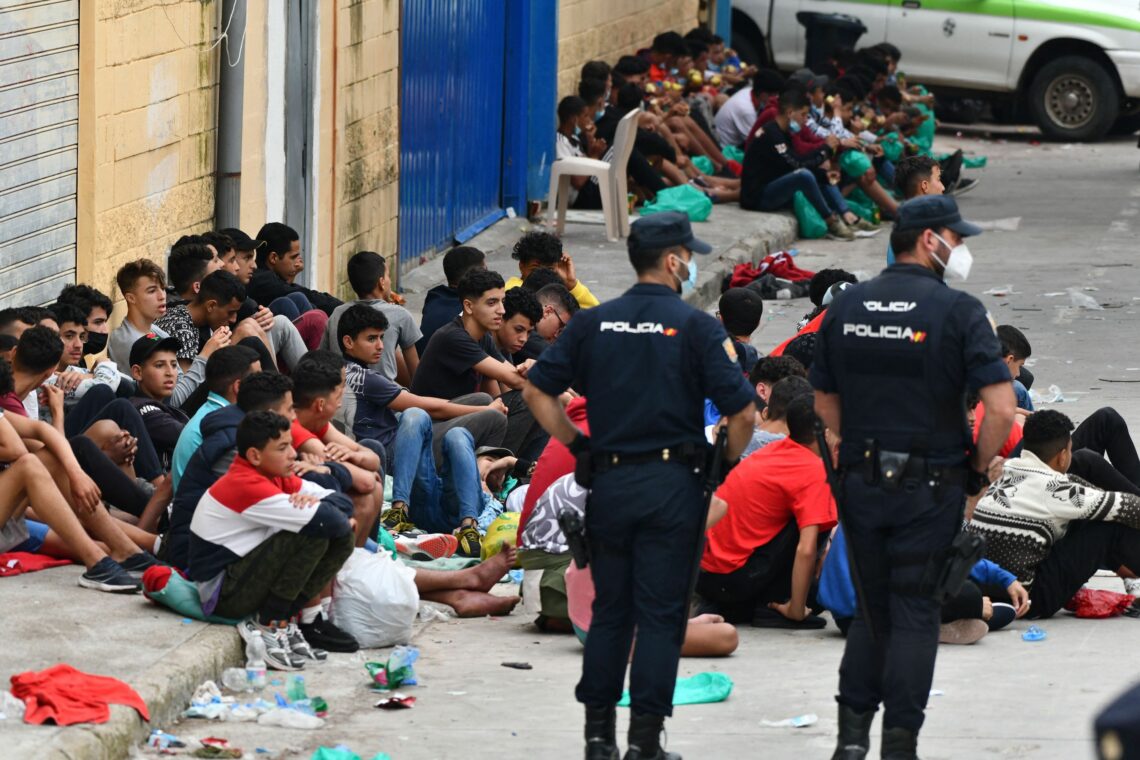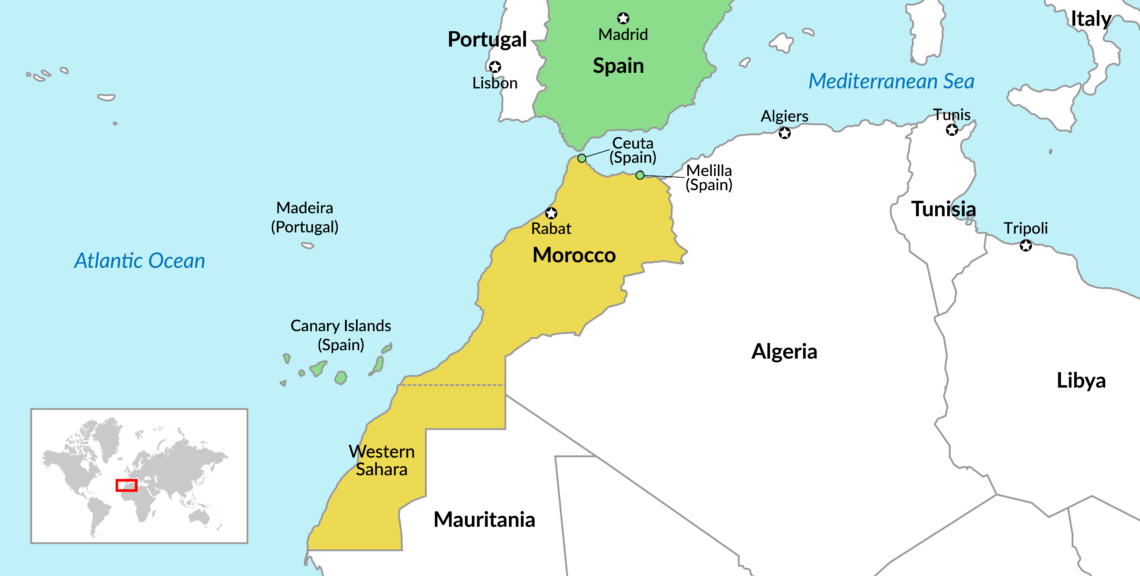European migration as a political tool
The recent crisis between Morocco and Spain was just the latest example of “weaponized” migration seen by the European Union. Gatekeeper states will continue to use migration for political ends, the threat of which will shape foreign policy for frontline EU members.

In a nutshell
- The EU is more exposed to weaponized migration
- Gatekeeper states will use migration for political ends
- A new migrant crisis in Europe is possible
From the Mariel exodus, supported by the Cuban Castro regime, to Idi Amin’s expulsion of Uganda’s Asian minority, the instrumentalization of migration is nothing new in history. But the European Union’s exposure to it has lately become more visible, as migration continues to shape foreign policy strategies, expose political vulnerabilities, and provide advantages to origin and transit countries outside EU borders.
This was demonstrated by recent events in Spain. Between May 17 and May 18, 2021, Moroccan authorities deliberately reduced surveillance along the border with Ceuta. This autonomous coastal city sitting across the Gibraltar Strait from Europe is officially Spanish territory and thus part of the Schengen Area. The decision was taken after Brahim Ghali – the leader of the Polisario Front rebel group, who is subject to a Moroccan arrest warrant for terrorist acts – was admitted for treatment in a Spanish hospital.
As Rabat put it, this was a “premeditated act” that would bear consequences. During those two days, more than 10,000 migrants from Morocco and sub-Saharan Africa crossed into Ceuta, including an estimated 1,500 children who could not be subject to deportation, according to Spanish law.
Facts & figures

The migratory and diplomatic crises were quickly contained. Prime Minister Pedro Sanchez canceled a visit to Paris and flew into Ceuta after ordering the deployment of the military to the border and the deportation of thousands of migrants. Spain also approved a 30 million-euro package to support Morocco’s policing of irregular migration. At the same time, the two countries engaged in diplomatic negotiations to prevent another crisis.
Mr. Sanchez, seconded by EU leaders, claimed that Spain would not be intimidated on the issue of migration, but the events have exposed the vulnerability of Madrid and the leverage held by Rabat. By suspending surveillance across the border, Morocco was able to trigger a political and security crisis in Spanish territory.
Migration hotspot
Known until 1975 as the “Spanish Sahara,” the Western Sahara is a portion of land the size of Britain, rich in phosphates and sparsely populated. In 1976, after Spain left the region, Morocco annexed this territory. The Algerian-backed Polisario Front, in turn, claims that the local people, the Sahrawi, have a right to self-determination.
The dispute, ongoing for decades, has determined Moroccan diplomacy and political events in Africa and beyond, dividing leaders across the continent. As the former colonial power, Madrid plays a critical role. Similar to Germany and unlike France, Spain has resisted the solution of integration with some degree of autonomy.
Vox would be well-positioned to reap the political benefits of a new crisis.
The May crisis was not the first time that Rabat has “weaponized” migration. In 2016, when the European Court of Justice ruled that Western Sahara was distinct from Morocco, surveillance across the border also decreased, triggering an influx of migrants into Spanish territory. In 2020, Rabat scored a major victory when U.S. President Donald Trump stated that he would recognize Morocco’s sovereignty over the territory in exchange for a normalization of diplomatic relations with Israel.
Morocco’s leverage in its relationship with Spain (and with the EU in general) results not only from its status as a regional power and important economic and security player, but also from the fact that it is a key transit, origin, and destination country for migrants. The country is an important crossing point within two migration corridors: the Western Mediterranean route, which refers to arrivals in mainland Spain via the Mediterranean Sea and in Ceuta and Melilla through land; and the Western Africa route, including crossings from Western Africa into Spain through the Canary Islands.
While the main corridor used by irregular migrants is the Central Mediterranean route, the migrant influx along the Western Africa and Western Mediterranean corridors has been increasing since 2018. According to European border security agency Frontex, between January and August 2021, there were 9,958 illegal border crossings along the Western Mediterranean route, with most individuals originating from Algeria (5,875) and Morocco (3,032). As for the Western Africa route, during the same period there were 8,562 irregular entries, mostly from unspecified sub-Saharan countries (5,758) and Morocco (1,839).
For the Moroccan regime, which survived the Arab Spring through a delicate combination of repression and reforms, migration works as a safety valve. Around 70 percent of the country’s youth (18-29) – faced with high unemployment and a lack of opportunities – is reported to consider emigrating. Furthermore, from a regional perspective, Northern Africa has become an epicenter of migratory movements. According to United Nations Department of Economic and Social Affairs data, the region is home to 3.2 million international migrants, with 61 percent being from sub-Saharan Africa. Sudan, Libya, and Egypt are now the top host countries of international migrants.
Political consequences
Migration has become a more salient issue in Spain, owing to two main factors: the effective increase in the number of irregular migrants, and the emergence of the ultra-right Vox party, which put the subject into the spotlight. In Spain, like in other European countries going through a “demographic winter,” population growth is being driven by immigration. Immigrants in Spain account for more than 12 percent of the population, a share higher than France or Italy as of the last year, according to the International Organization for Migration (IOM). The politicization of the issue reflects an increase in irregular entries: according to IOM data, in 2020 42,000 people arrived irregularly in Spain, compared with 34,000 in Italy and 15,000 in Greece.
In some places – including Ceuta, Melilla, or the Canary Islands – the rise in irregular migration, combined with perceptions of marginalization by Madrid, has been disruptive. During the May crisis, the effects were immediately felt as schools were closed, the vaccination campaign was suspended, tensions between irregular migrants and residents increased and soldiers were deployed in the streets. In Gran Canaria, the number of irregular entries increased more than eightfold in 2020. The archipelago has become a retention point, with migrants not allowed to proceed in their journey.
As elsewhere, disruption may also have political consequences. Ceuta has become a Vox stronghold: in the 2019 general elections, the party of Santiago Abascal defeated both the Spanish Socialist Workers’ Party (PSOE) and the conservative People’s Party (PP), securing 35.29 percent of the vote. In Andalusia, another destination of irregular migrants and the Spanish region now hosting the highest number of unaccompanied foreign minors, Vox won 20.39 percent of the vote.
A European challenge
Whereas Europe’s vulnerability to the weaponization of migration is not new, it has become clearly exposed since the 2015-2016 migrant and refugee crisis. Though migrant flows have decreased, the challenge has hardly ended. Last year, for example, tensions between Ankara and Athens escalated as Turkey briefly opened its border, allowing migrants and refugees to cross into Greece. As in the case of Morocco, this decision was political, prompted by EU criticism of Turkey’s invasion of Northern Syria.
Turkish President Recep Tayyip Erdogan has recurrently resorted to the threat of “opening the gates,” sometimes in a very clear way. In a 2019 speech to parliament, he put it explicitly: “Hey EU, wake up! I say it again; if you try to frame our operation there as an invasion, our task is simple – we will open the doors and send 3.6 million migrants to you.”
Libya has also been able to use the containment of migration to increase its leverage over EU countries and secure access to money and political and strategic advantages. The fall of the Qaddafi regime led to anarchy, with power fragmented among a vast and volatile network of actors, making it more difficult for the EU to negotiate containment strategies. And while migration flows have decreased, it remains to be seen at what cost. By 2020, the number of migrants and refugees in the country was estimated at 574,000 and 43,000, respectively. Along with weapons and drug trafficking, migrant smuggling and human trafficking have become the main drivers of a thriving transnational parallel economy – connecting government officials and armed militias to organized crime groups and terrorist movements.
Scenarios
Considering the current context, three scenarios must be considered.
The first and most likely scenario is one of “business as usual.” Irregular migration will become an increasingly relevant issue in Spain, as has happened in other frontline states. What recent trends suggest is that the movement of people – including migration – is extremely difficult to contain, and whenever physical barriers emerge on one route, an alternative route eventually arises. This means that successful attempts in containing migration into one country will probably lead to increasing pressure over the borders of another country. Fears of irregular migration will also, albeit more discreetly, continue to determine foreign policy choices, not only at the EU level but also in Spain. The model of the EU migration deal with Turkey will continue to be replicated with countries like Algeria, Morocco, Libya, or Tunisia.
From a regional and continental perspective, gatekeeper states will continue to instrumentalize and, if necessary, weaponize migration. The number of migrants and refugees in these regions will increase because of the economic disruption provoked by the pandemic, rising instability in the Sahel and the Horn of Africa and the removal of travel bans.
Furthermore, emigration will remain a security valve for many regimes where living conditions for young people are not expected to improve, at least in the short- to medium-term.
In this scenario, the “open gates” threat will determine the strategies and foreign policy of both the EU and frontline member states like Italy, Greece and Spain. It will also influence important issues like settling the dispute between Turkey and Greece over the Aegean Sea and the Sawari question. Buffer states that play a vital role in containing migration will continue to use their external leverage to consolidate domestic power.
For the Moroccan regime, migration can serve as a safety valve.
In a second, less likely scenario, the “open the gates” threat – or another environment of instability and political fragmentation in one of these buffer states – could lead to another refugee and migrant crisis affecting Europe either at a regional or national level, with potentially far-reaching political consequences.
In the case of Spain, Vox would be well-positioned to reap the political benefits of such a crisis, as other parties – including the People's Party – are not comfortable addressing the challenges of irregular migration. This could in turn trigger a reconfiguration of the right in Spain, where the ruling left coalition seems to be losing support. It may also contribute to further intensify cleavages between antagonizing blocks within the EU.
Under a third, unlikely scenario, the EU and frontline states would be able to overcome the challenges posed by irregular migration. This would be the result of effective containment measures, combined with rising acceptance of regular migration to respond to the “demographic winter” and prevent the abrupt decline of working age population.
However, two factors work against this scenario. First, containment measures, as well as the determinants of migration, are largely outside EU control. Second, in countries like Greece, France, Italy or Spain, irregular migration and its challenges – including integration challenges – will remain highly divisive politically.







